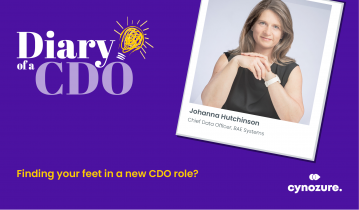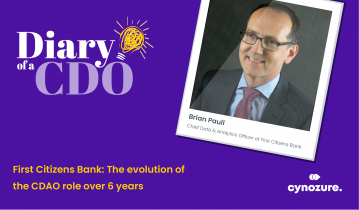Intro
Social media has fast become a huge part of our lives and a key channel for many marketers. Facebook alone has 2.2 million monthly users, generating a whole load of social data. This is exactly why social data shouldn’t be overlooked when you consider your data sources for your strategy.
Every time we post something about ourselves, we offer up knowledge on our views, our likes and dislikes, our habits, and our ambitions. On an individual level, this can be pretty useful, but en masse it’s even better. Analysing social data is obviously great for understanding if marketing efforts are working and manufacturing an effective data strategy, but it can also help you spot gaps in the market, potential risks to your business, and industry trends.
What is social media data?
Social media data encompasses all the raw data that can be collected from any social media activity. Some social data can tell you how people engage with your content, what platform is most effective (LinkedIn versus Facebook, for instance), and the times when your target audiences are online. It includes all the usual metrics (clicks, likes, engagements) as well as data on social connections, and sentiment data from their posts.
Why you should be using it
Social media data is relatively easy to access as it’s already out there in the public domain for everyone to see. The rise of social media has been great news for data scientists and analysts because it offers a completely new set of data for them to pore over.
This data also gives some really detailed insights into customer behaviour and thinking. Information that businesses never really could get hold of before. It’s this data on people’s sentiment, activities, communities, and preferences that can really create more value from your strategy.
Likewise, social data is consistently timely – we’re on it nearly all the time with over 80% of social media users on a platform every day. This gives organisations a real-time view of customer sentiment and behaviour. Social data is so up-to-date, and there’s so much of it, that it can even be employed to predict customers’ future behaviours.
The challenges of social media data
But there is some controversy surrounding social data and its use; notably, the significant fall-out from the Facebook and Cambridge Analytica scandal. Therefore, organisations need to tread carefully when using social media data. Mostly by ensuring people have consented to its use, and by having a clear business use-case that’s fair, ethically and its use can be justified.
Effective marketing through social data
In terms of marketing effectiveness, social data can tell you things like:
- whether Instagram or Twitter convert the most customers
- whether your audience prefers videos or images
- what posts they interact with the most.
This can be fed back into your marketing strategy, informing your social media and content marketing plans.
It doesn’t just apply to B2C organisations either. Although B2B marketers and salespeople might think that they are selling to other businesses, the truth is that they still deal with other people. Therefore, understanding what drives decision makers in different organisations is critical, and social media can help inform that.
Workplace social media
Don’t forget your enterprise social media either. This is data collected from Slack, Yammer or other internal tools. that can be used to better understand the motivations of employees, employee sentiment, relationships and interactions between teams and reactions to business and global events within your organisation.
This is like gold dust for the Board, Managers, and HR as it can provide a warning for senior management if people react negatively, or it can be used to figure out if an employee engagement programme is a success. Data from internal social networks can also provide insights into how everyone engages with everyone else in the workplace, and how well they work together. In turn, this can be used for HR and internal comms strategies.
Social data is most effective when combined
However, it’s when you combine your social media data with your other data sources that results get really eye-opening. It shouldn’t be kept in a silo, but instead used with other organisational data.
Combining social media data with customer service centre data, you can work out how customers feel towards your company. If you then add inventory data and track insights over time, you can see where stock issues make people annoyed with your business. You can spot patterns in the data that can help you predict when negative customer sentiment is likely to occur, and then try to avoid the potential issue from occurring in the first place.
Get ahead of the competition
Tracking competitors through social media is an easy and effective way of keeping an eye on your market. Competitors’ social media data can be a good source of inspiration for your own marketing activities. It can also be used to spot opportunities or gaps in the market.
For example, if a competitor suddenly discontinues a product, or customers begin to flood their social media with complaints about an inferior item, you can take advantage by offering an alternative.
Additionally, review data from sites like TripAdvisor can be combined with social media data to offer a more detailed view of your competitors’ overall performance.
Improve your user experience
You can better understand your customers’ online experiences by combining review, website and social media data. In turn, this will quickly diagnose and address any online issues that could be affecting your sales.
With all the ads out there, companies are fighting over dwindling customer attention. Marketing needs to be ultra-targeted to really connect with consumers. Social media data can be used for some super-specific audience segmentation. It gives granular insights into someone’s behaviour and reasoning. People can be segmented based on what they’ve liked and disliked, the groups they have chosen to be a part of, and posts, or content they’ve clicked on.
Your own thought-leadership and content marketing plans can be informed by identifying the content that people are clicking on and reading (not just your posts, but also competitors’ or industry influencers’). Trends on social media are a good predictor of topics that will perform well with your audience.
Where to start with social media data
There are so many potential applications, that every organisation can benefit from using social media data. With any new project, it’s best to start small and test the waters. Firstly, your social media data shouldn’t be kept in a silo (in fact, none of your data should!). By combining it with lots of different data sets, you can uncover insights that you wouldn’t have previously considered. That said, it’s important not to simply use social media data for the sake of it. Instead, you should ensure that its use aligns with your overall data strategy and business goals.
Social media is an invaluable data source, so make the most of it. There’s a lot more to social media than, well, being social. It’s a treasure trove of customer behavioural and sentiment data. Have a dig around, you’ll be amazed at what you will find.
If you are interested in finding out more, come along to our webinar: The Pillars of a Successful Data Strategy








